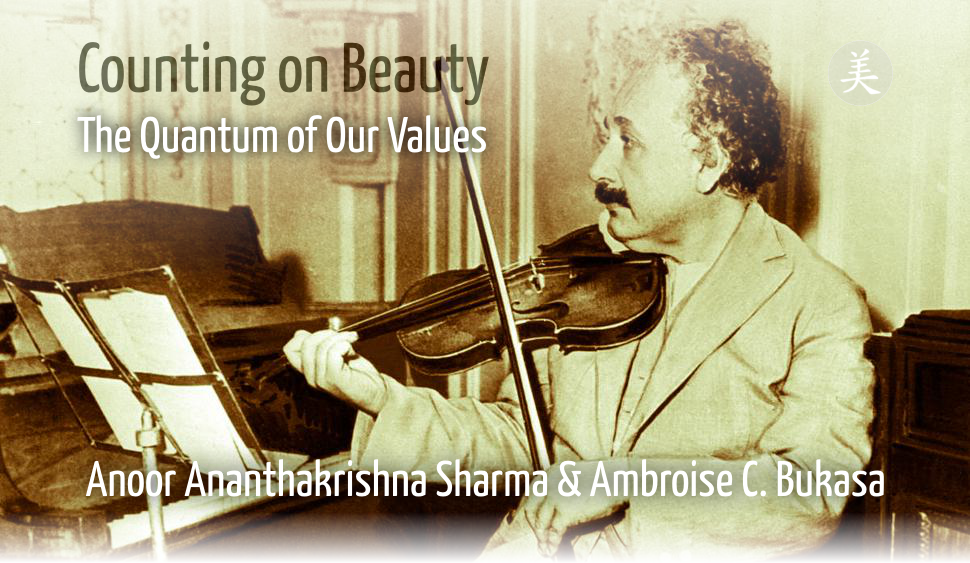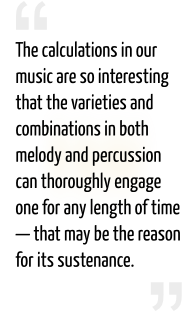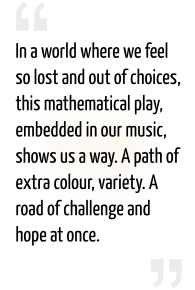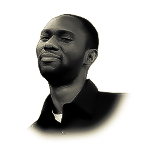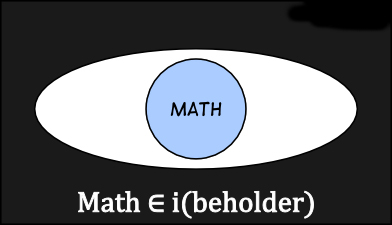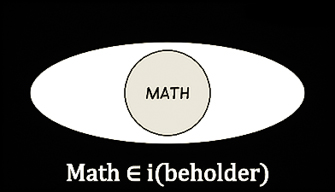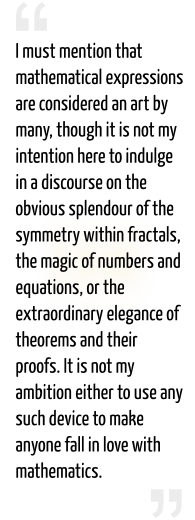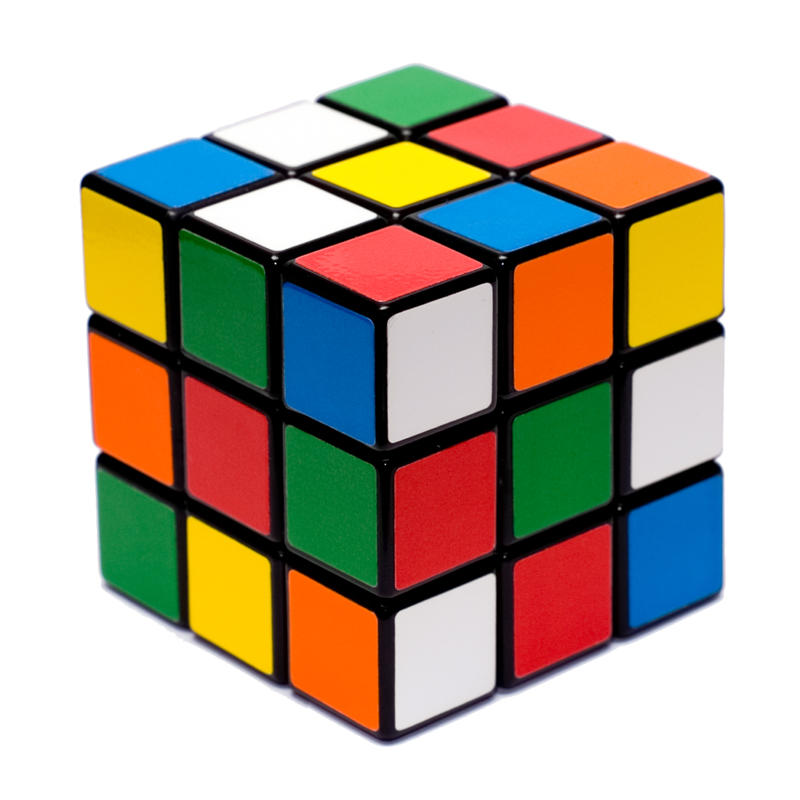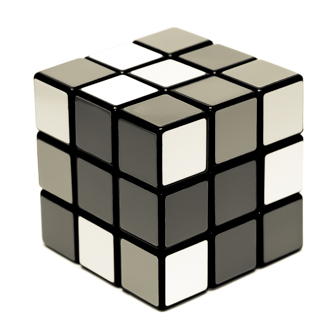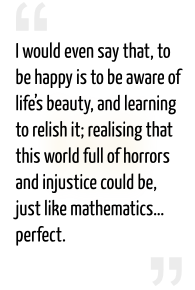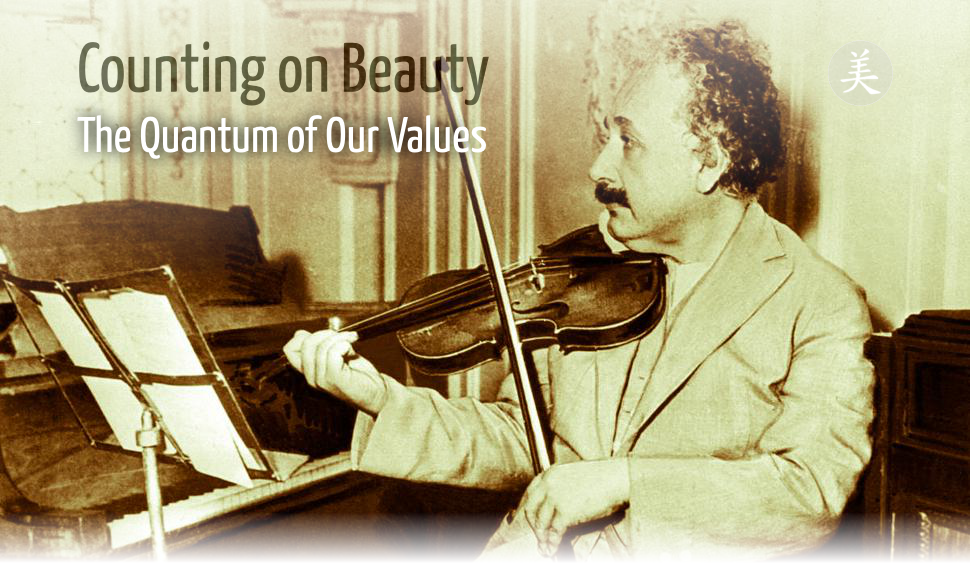
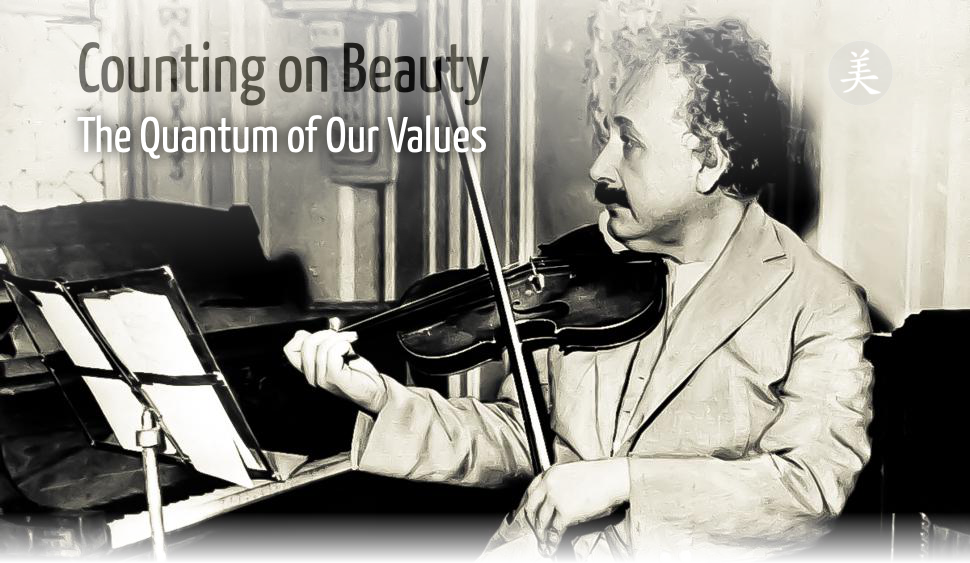
19 May 2014No, we are not afflicted by the Nero syndrome. But then, why do we feature an international exchange on beauty, music and mathematics in the wake of an unprecedented political churning in India? That today is the 40th anniversary of the Rubik’s Cube would have been the most fitting reason for such an exchange, had our political circumstances not told us that we are trapped in a network of instant gratification. This mesh threatens to render the beauteous possibility of the ideal of freedom irrelevant. If a mathematician’s liberal quest for beauty or a musician’s open-ended structuring of his art is seen as having no transformative content today, there is indeed an urgent need to reclaim the pure sciences and the arts as political spaces, and their profound pursuits as relevant acts of lasting ethical value. Through this Inter-action, we wish to remind ourselves that the shape of any governance can truly serve us only if we employ pure numbers and principles of harmony in our political architecture. We warn ourselves against larger than real numbers that would distort our vision, and jumbled beats that would hurt the music of our understanding. For the second issue of our series on beauty, we welcome Anoor Ananthakrishna Sharma, acclaimed Mrindangam artiste, who unveils the mathematical DNA of the architecture of Karnatic music, and highlights its infinite possibilities. Congolese mathematician Ambroise C. Bukasa celebrates his discipline as the admiration of the flawless and the mysterious. |
Hold the cursor on the illustrations to display animations and descriptions.
A Quest for Precise FormsAnoor Ananthakrishna Sharma |
In Admiration of the IdealAmbroise C. Bukasa |
||||||||||||||||||||||||||||||||||||||||||||||||||||||||||||||||||||||||||||||||||||||||||||||||||||||||||
|
In our days of fickle fortunes, one tends to dream of continuities. Such reflections naturally lead one’s mind toward the fields that have survived the test of time, provoking a genuine inquiry into what exactly has made these sites endure. A deep investigation in this direction would reveal how those that have lasted have done so only due to their mathematical alignment with the cosmic order of nature. I am a practitioner of South Indian classical music. Karnatic music, as my field is known, presents one of the oldest forms of music. It has continued to exist not only because of the scientific approach it has adopted and nurtured, but also owing to its deep engagement with various branches of knowledge such as physics, logic, psychology and the like. Mathematics, for instance, is an integral part of Karnatic music. In these chaos-ridden times, it seems particularly significant to contemplate on how important it is to calculate right, to arrive at the correct numbers, in order to effect beauty, harmony and happiness.
In Karnatic music, each and every phrase, note and the beat played on the percussion is calculated. The calculations in our music are so interesting that the varieties and combinations in both melody and percussion can thoroughly engage one for any length of time — that may be the reason for its sustenance. Karnatic music uses different systems of thaalas and these systems, along with their rhythmic arrangements, make for a fascinating study. In order to highlight the precision that goes into the making of the thaalas, I would like to mention here two systems of classifying them. The first system, called Chapu, classifies the thaalas under four heads:
Another system of thaala, the Suladi Sapta, has seven thaala families, as presented below. Together, they contain thirty-five thaalas:
Coming to the application of mathematics in this music, let us look at the six different varieties of the phrase Tha Dhi Gi NA Thom. One can see that the classification here is done by adding one akshara per phrase: 1.
2.
3.
4.
5.
6.
Each of this (Tha Dhi Gi NA Thom) is played three times, which make it fifteen aksharas a cycle. The same is done for the other varieties also. Various permutations and combinations can be arrived at, while playing in this mathematical manner — this is a play that gives rise to many forms of musical beauty. For instance, instead of playing five aksharas three times, one may play other combinations such as three, five, seven or four, five, six where the total remains the same but the presentation changes. The freedom of play is immense, with the beauty and joy that are generated too, becoming limitless. This is the mathematical application of numbers in music, but there is more. It is even more intriguing how visual impact is created through the writing of music in this system. The creation of shapes is made possible through different yathis, or arrangements of the syllables into beautiful combinations of ascending and descending phrases. The visual representation of yathis gives a clue to the geometrical meaning of their execution, and their connection with the world of mathematical concepts. 1. Sama (equal) yathi:
2) Vishama (jumbled) yathi:
3) Gopucha (cow’s tail) yathi: Tha 4) Shrothovaha (flow of a river) yathi: Tha Ki Ta Tha Ka Dhi Na 5) Mridanga (percussion instrument) yathi: Tha Ka 6) Dhamaru (percussion instrument) yathi: Tha Ki Ta Tha Ka Dhi Na It is impossible to exhaust the embedded usage of mathematics in South Indian music. The possibility of combinations varies from person to person, too. A phrase with a mere eight akshrams may be shown in different ways such as two-six, three-five, three-three-two and four-four. When it comes to higher numbers the possibilities of expression increases manifold. The phrases are also played in different speeds, opening a realm of beautiful possibilities.
In a world where we feel so lost and out of choices, this mathematical play, embedded in our music, shows us a way. A path of extra colour, variety. A road of challenge and hope at once. And there is no end to exploration along this course — after more than three decades of experience in the field of Karnatic music, I still have not been able to understand the vastness and the depth of what I deal with. And it is this mystery that makes it survive — it lures me and many others to continue on this path, questing, ever seeking the ideal beauty of music amid our troubled times. |
In a world of practical purposes, it takes immense daring to dream and speak of the ideal. Beyond indulging in the mechanics of filling one’s time with ‘doing’, our monotonous time does not allow us enough digressive spaces to reflect on the multi-dynamics of both our acts and the choices or no-choices that lead us to perform them. I am from a country where beauty remains only in what the human has not yet blighted with its footprints. Having grown up on a hill on which, just a while back, nature had delighted with the pureness of its greenery, I had the privilege to admire sunsets on blue-grey horizons made of masses of earth drawn by the Hand of God, while listening to the beautiful melody intoned by the savage pigeons, and the wind announcing the night’s freshness — a consolation to a burning day. What beauty…! It was all so very real that it could have been missed. Beauty’s simplest meaning. As I am formed by and engaged with my personal memory of such beauty, this moment, as I live my life as a mathematician, in a faraway country that is currently witnessing an unprecedented political transition, I am faced with a legitimate question: what is beautiful in mathematics, and how is that relevant to my immediate context? In order to appreciate beauty in a certain space, I require a profound understanding of my own approach to it. My personal impressions indeed determine the response to this question: my sensibility with respect to the beauty present in a thing comes equally from my way of explaining it as from my direct interaction with it. And this quest, mine as well as others’, at times, leads us to like or dislike the same things, but for very different reasons. This multi-centredness is also linked to the fact that there are multiple ways to recognise beauty, by appealing to our own diverse senses, often in combination. For the same reason, one cannot limit the perception of beauty to one’s eyes and ears, as many tend to do, consciously or not. It is where the understanding of beauty is registered beyond our senses that mathematics enters the discussion of the beautiful, and makes itself relevant to us in a lasting manner.
Many find the beauty of maths in its applications in physical or logical problems associated with perceived reality. These seekers might feel more rewarded if there was a way of developing a mathematical branch of abstract feelings, too. For, if logic governs mathematics, it does not rule at all over mathematical intuition and inspiration, nor does it over the creativity of the human mind. The possibility of such creative exploration is latent in some of us recognising a sense of poetry in mathematics and its language. I must mention that mathematical expressions are considered an art by many, though it is not my intention here to indulge in a discourse on the obvious splendour of the symmetry within fractals, the magic of numbers and equations, or the extraordinary elegance of theorems and their proofs. It is not my ambition either to use any such device to make anyone fall in love with mathematics. Such impositions will not work. I would rather want to talk about the flawlessness of what I personally call Hilbert’s passion, in reference to the great German mathematician David Hilbert, whose works aimed at the quest of uniformity in the written and logical expression of all the branches of mathematics. It is ironical that some of the ardent lovers of mathematics are among those who know none of its branches, while many of those gifted in mathematical abilities hate this tradition of knowledge. Let me present my own case here as an example. Early on in life, I learnt to detest maths, thanks to its reputation: it is a necessarily difficult discipline, reserved only for a minority of extraterrestrials who would end up, one day or the other, looking like Doc, alias Doctor Emmett Brown from Back To The Future. The one with Einstein’s look! 19 may 1974: The Rubik’s Cube was born But life is surprising, fortunately. The beginning of my passion sprouted from the realisation that maths is bestowed with a sense of coherence, rigour and perfection — all that seem impossible in the real world. And I faced my puzzles: Does it even belong to the real? What, really, is its nature? Though some civilisations can pretend, more than others, to have contributed significantly to the development of maths, none would dare think of itself as the inventor of this discipline. All civilisations, naturally, discovered and used it, in various forms, in a more or less sophisticated manner, according to the places and the epochs. No one, thus, invented the fact that a dog and a cat make two animals, or that there is a similarity between the sun, the full moon, and some part of our eyes. But, yes, several of these discoveries were products of the human genius. It is by recognising at once the illustration of a prodigious human intelligence in the process of discovery, and the value of the discovery itself, that we may make out what provokes the smile on the mathematician’s face. It is not about the utility of mathematics. It is about what it is fundamentally. Mathematics is alive. It is a universe of purity, whose liberty is its very essence. What is the use of mathematics? Hearing this question for the first time, I replied that it permits us to describe the world, and even the worlds beyond ours. My interlocutor, unsatisfied, led me to quote Galileo, for whom mathematics is the alphabet with which God created the world. Today, I still believe that mathematics is the modelisation par excellence of the world in its complexity. Refusing any internal error, mathematics explains, qualifies and quantifies our own errors. It is our means of communication with the absolute. And that is why it is relevant to all critical times — it helps us check and balance the reality about us against the ideal, the cherished, the most beautiful. That is how my pursuit of mathematics makes me relevant to my own native country spoiled by the human touch, as well as the country of my present residence cluttered by election figures — it makes me a true seeker of the beauty of living. According to the Nobel Prize laureate of Physics 1965, Richard Feynman, to those who lack a deep knowledge of mathematics, one cannot explain the world and make its beauty felt. To understand the world and pull oneself through it, it is better to learn well how to count rather than to rhyme, as Mos Def would sing about mathematics in his eponymous masterpiece. Humans will come and pass; mathematical principles will remain, and that is why Jean-Michel Bony argues that mathematics is a tool that the human mind never stops constructing and perfecting, so as to understand the world. For André Lichnerowicz, mathematics certainly constitutes the more noteworthy factor of the unity of knowledge. He adds that all of our efforts of intelligence around the physical world often lead to an elaboration of theories aiming at representing, as finely as possible, large portions of the real. And this representation is mathematical. Mos Def, Mathematics A unity of knowledge, indeed – it also explains the usage, falsely believed as archaic, of the singular form for mathematics in French – la mathématique. Its plural reminds everyone of the many subdivisions of this science. The word mathematics meant, at its origins, knowledge. Simply.
It is hard to savour life if one is not able to see beauty in most of its manifestations. I would even say that, to be happy is to be aware of life’s beauty, and learning to relish it; realising that this world full of horrors and injustice could be, just like mathematics… perfect. Beauty is the reflection of genius, human or otherwise, and it arouses admiration. One admires what is not banal, common or trivial. This admiration is at the heart of mathematics. It is an honest political seeking in a given context. But it is also a quest void of an end, of the ultimate discovery. A part of mystery is necessary in all beauty. That is why, despite the hardships, iniquities, disgraces, separations, I believe, life is worth living. |
||||||||||||||||||||||||||||||||||||||||||||||||||||||||||||||||||||||||||||||||||||||||||||||||||||||||||
|
Anoor Ananthakrishna Sharma is a renowned Mridangam artist and composer. He has accompanied and collaborated with the finest musicians of the Karnatic world. Besides giving performances and lecture demonstrations across the world, he has taught Mrindangam to many students. He is a versatile percussionist and can play Thavil, Thabala and Pakhawaj as well. Widely felicitated by various bodies, his imprint extends to popular light music and film music. Currently, he is directing Layalahari, a percussion ensemble made mostly of Mridangam artists, playing other percussion instruments with the same felicity.
|
Ambroise C. Bukasa is a Congolese mathematician based in Delhi. In 2008, he completed five years in Mathematics, speciality Applied Mathematics, from the department of Mathematiques et Informatique of the Université de Kinshasa. His thesis focused on ‘Alexandrov’s topologies and image processing’. Thanks to his academic distinctions, he became assistant teacher for two years, before going abroad to pursue his studies further. His dream is to return to Congo to do research and to share with younger generations his passion for mathematics, and the hope it arouses.
|
||||||||||||||||||||||||||||||||||||||||||||||||||||||||||||||||||||||||||||||||||||||||||||||||||||||||||
Disclaimers: The opinions expressed by the writers are their own. They do not represent their institutions’ view.
LILA Inter-actions will not be responsible for the views presented.
The images and the videos used are only intended to provide multiple perspectives on the fields under discussion.
Images & videos courtesy: History Boomers | Khanjira Man | Spiked Math | Order by Chance | Mario
Share this debate… |
… follow LILA… |
||||
